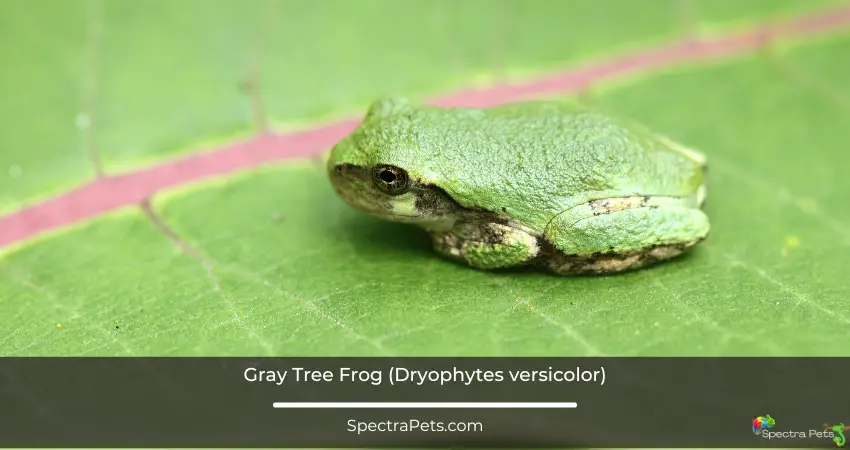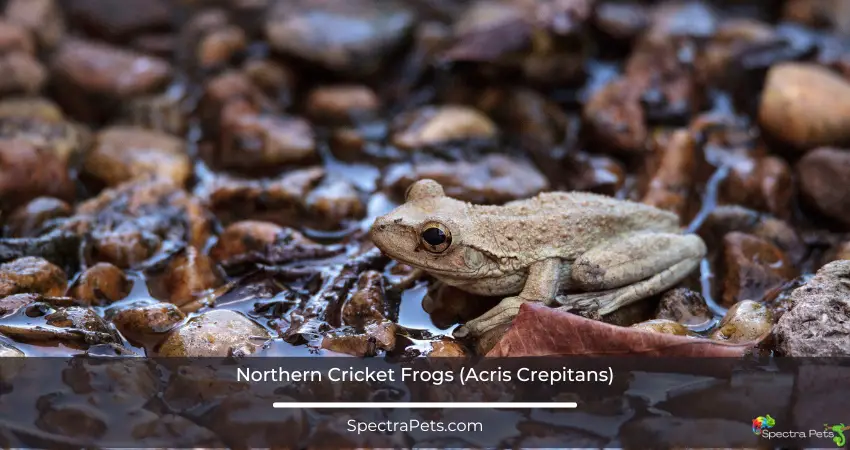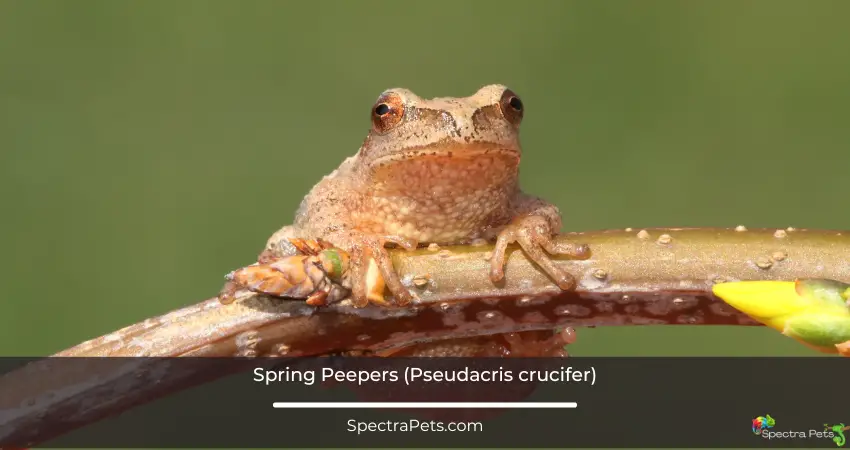You might see a lot of tree frogs on Instagram, but would you believe it if I told you that there are tree frogs in New York and other major states in the US? That’s right, tree frogs have invaded New York. For those of you who are nature lovers and appreciate the beauty of these creatures, this is great news.
If you’re lucky enough, you might even encounter one of them. In New York, you will find gray tree frogs, northern cricket frogs, and spring peepers. They’re much different from regular frogs, so seeing them will delight you.
While they may not be as common as other wildlife species in New York, tree frogs are worth seeking out for their unique beauty and interesting behaviors. Here’s what you need to know about these fascinating creatures.
3 tree frog types that are common in New York
As a long-time resident of New York City, you probably learned to adapt to the constant noise and overcrowding. But there’s one creature that will manage to surprise you: the tree frog. Yes, these amphibians can be found all over New York, even in Central Park, right in the heart of Manhattan.
But, what are these frogs like? What do they do? These are some of the things I’ll go through down below:
1. Gray Tree Frog (Dryophytes versicolor)

In most people’s minds, frogs are green amphibians with large eyes and long legs. It is important to note, however, that frogs vary greatly, with the gray tree frog being one that is particularly interesting.
With an adult body length of 1.5 to 2 inches, these frogs are relatively small. Although they’re called gray, they have amazing camouflaging skills that let them change their skin color like mottled gray, green, and brown to adapt to their surroundings.
In addition to their chameleon-like camouflaging, each of them also has a white spot underneath its eye. Additionally, their snouts are relatively short and their skin is bumpy. They have bright orange marks on the undersides of their legs, which is perhaps their most distinguishing characteristic.
Since they are adaptable, they can be found in various habitats, including woodlands and urban areas. The gray tree frog has so many fascinating characteristics that it is easy to see why it is a favorite among amphibian enthusiasts.
Gray Tree frogs are an integral part of the New York ecosystem – you’ll spot them just about everywhere. They tend to stick to the treetops, but during the breeding season, you might find them in ponds, swamps, and even garden water features.
These fishless bodies of water are necessary for breeding and laying eggs; without them, the species would die out.
There is something you should take note of: Gray tree frogs and Cope’s Gray Tree Frogs are not the same species. I don’t know who thought it was a great idea to name them similarly, especially when both the frog types look identical.
The best way to distinguish between them is through the noise they make. I’ll elaborate on that later below.
Read More: Are Gray Tree Frogs Poisonous?
2. Northern Cricket Frogs (Acris crepitans)

The Northern cricket frog might look from, with the adults having a size from 0.75 to 1.5 inches. But don’t let their size fool you – these frogs are feisty. The most notable thing about them is their irregular color pattern.
There is usually a triangular dark spot between their eyes, and their colors range from gray to green to brown, yellow to black. On their legs, they have an opaque banding and a blunt snout. With so many variations, it’s not easy to identify them.
And if that wasn’t enough, they’re also known as Eastern Cricket Frog. What a confusing situation! If it were me I’d raise questions about who gets to name these frogs (just kidding).
They are the smallest vertebrae you will find in New York, but as I said before, they’re feisty as hell! They can jump up to feet in the air with a single leap and move around quickly in water to escape oncoming predators.
Amazing agility, small size, colorful skin – it ticks every box that a collector would love to have. Commonly, you’d see them in rivers or slow-moving water bodies.
3. Spring Peepers (Pseudacris crucifer)

Out of the three, you have a higher chance of meeting these little fiends. You’ll find them anywhere in New York wherever there is an open wetland. Spring peepers are a small species of frog that is native to North America.
Adults typically reach a length of 1-1.5 inches and are light brown or tan in color. The females are usually darker than the males, but both sexes feature a dark cross or ‘X’ on their backs. Spring peepers are most active during the springtime, hence their name.
They have large toes that they use to climb trees, however, despite being classified as tree frogs, they spend more time on the ground near wet areas. This is where they breed and lay eggs. After two months, their tadpoles leave the wetland and move towards the forest.
They can leap 50 times their size, it’s an amazing sight.
Tree frog sounds in New York
Although tree frogs are all over New York, you’d still be surprised to know a lot of people haven’t seen them visibly. So, how do they know there are frogs around? By listening!
Speaking of listening, you can differentiate between a gray tree frog and a cop’s gray tree frog by listening to gray tree frog sounds during mating season.
This is also how you differentiate between a gray tree frog and a cope’s gray tree frog. Northern cricket frogs, on the other hand, make a very sweet chirping noise during mating season.
Spring peepers make a noise like a baby chick.
As you can see, all of them make distinct sounds. You can easily identify one from the other, as long as you know which one sounds like what. So, learning about these will definitely help you.
Wrapping Up
With their unique coloring and charming personalities, tree frogs are quickly gaining popularity among city residents.
So next time you’re out for a walk in the woods, keep your eyes peeled for these small but important creatures. Who knows, you might even spot one in your own backyard.
If you’re lucky enough to spot one of these little critters near you, make sure to take a picture or two! They’re definitely a sight to behold.
Tree Frogs Found in the Nearby States of New York:

